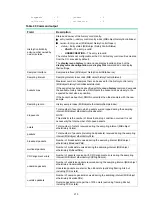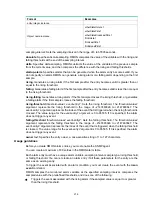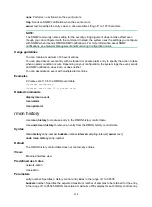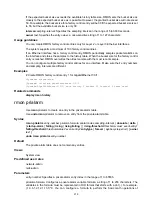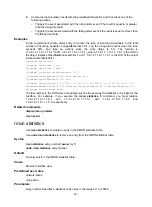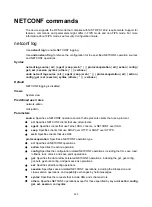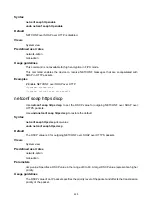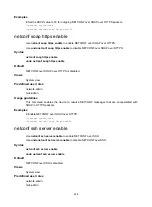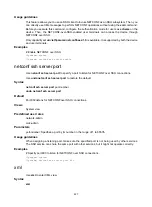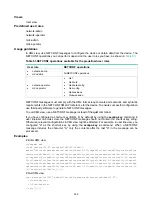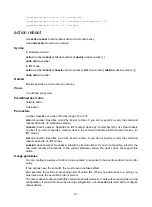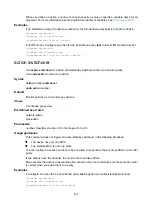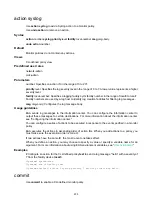
218
none
: Performs no action when the event occurs.
trap
: Sends an SNMP notification when the event occurs.
owner
text
: Specifies the entry owner, a case-sensitive string of 1 to 127 characters.
NOTE:
The SNMP community name setting for the
security-string
argument does not take effect even
though you can configure it with the command. Instead, the system uses the settings you configure
with SNMP when it sends RMON SNMP notifications. For more information about SNMP
notifications, see
Network Management and Monitoring Configuration Guide
.
Usage guidelines
You can create a maximum of 60 event entries.
You can associate an event entry with a standard or private alarm entry to specify the action to take
when an alarm condition occurs. Depending on your configuration, the system logs the event, sends
an SNMP notification, does both, or does neither.
You can associate an event with multiple alarm entries.
Examples
# Create event 10 in the RMON event table.
<Sysname> system-view
[Sysname] rmon event 10 log owner user1
Related commands
display rmon event
rmon alarm
rmon prialarm
rmon history
Use
rmon history
to create an entry in the RMON history control table.
Use
undo rmon history
to remove an entry from the RMON history control table.
Syntax
rmon history
entry
-
number
buckets
number
interval
sampling
-
interval
[
owner
text
]
undo rmon history
entry
-
number
Default
The RMON history control table does not contain any entries.
Views
Ethernet interface view
Predefined user roles
network-admin
mdc-admin
Parameters
entry
-
number:
Specifies a history control entry index in the range of 1 to 65535.
buckets
number
: Specifies the expected maximum number of samples to be retained for the entry,
in the range of 1 to 65535. RMON can retain a maximum of 50 samples for each history control entry.







